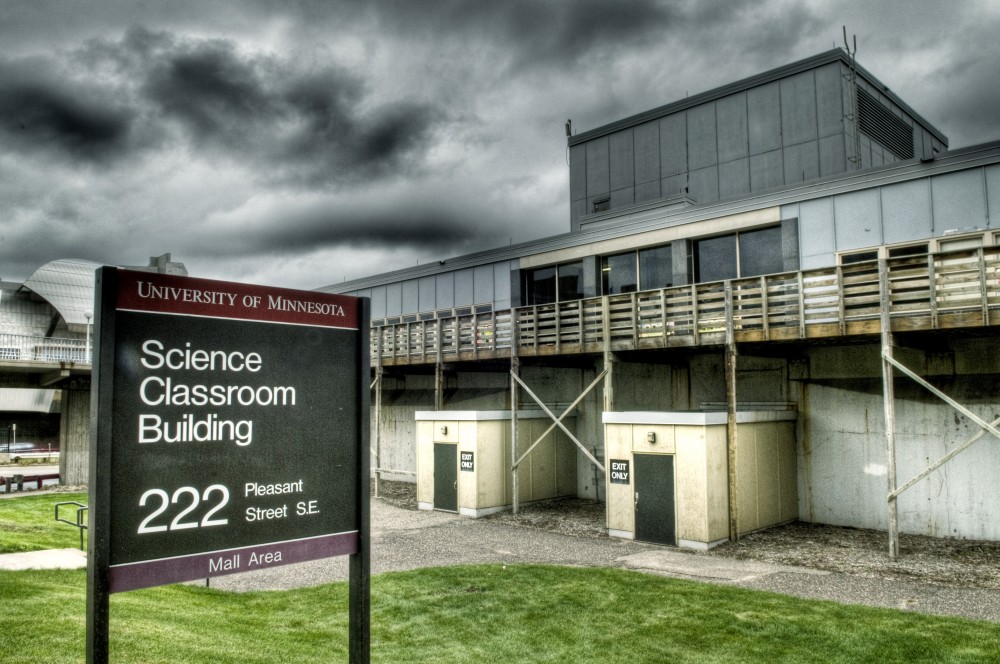After years of University officials asking for the state Legislature to make it happen, the Science Classroom Building is scheduled to see its final day at the end of fall semester. The 46-year-old building is scheduled for demolition in January to make way for the Science Teaching and Student Services building (ST+SS), scheduled to be completed by Fall 2010. Including demolition costs, the project will cost $72.5 million. The new building promises to be a more practical âÄî and better-looking âÄî structure than the building it will replace. The University asked the state Legislature to fund the project in 2006, but it wasnâÄôt until this year that the request was successful. One of the driving forces behind the project was the UniversityâÄôs desire to better utilize the buildingâÄôs site. Project Executive Justin Grussing said the current building doesnâÄôt give the preferred view or access to the Mississippi River. The chemistry department, which holds many of its large lectures in the building, will relocate to Anderson Hall following the buildingâÄôs demolition. While the Science Classroom Building has four large lecture halls, the new building will only have two. Chemistry and biology Professor William Tolman said itâÄôs an adjustment that, when taking into account the limited access to the Washington Avenue Bridge, will be inconvenient for students and faculty. âÄúClearly, itâÄôs not good for us,âÄù Tolman said. He said that from the perspective of teaching a large class, the rooms at the Science Classroom Building are excellent. âÄúThe building itself, of course, is a dinosaur,âÄù Tolman said. Chemistry Professor David Blank said he likes the way the classrooms there are structured, and that the chemistry demonstration facilities in the rooms are an asset. If the interim classrooms at Anderson Hall donâÄôt provide these facilities, he said, âÄúIt will be disruptive to education.âÄù According to Chuck Tomlinson , assistant to the vice-chair in the chemistry department, the Anderson Hall classes will have access to demonstration facilities, but they will not be as extensive as the current ones. Bomb shelter or chemist haven? Although Capital Planning and Project Management Director Orlyn Miller said he was aware that a widely held student rumor says the building was originally built as a bomb shelter during the Cold War, University archives couldnâÄôt verify the truth of the story. Grussing, however, said he believes the building was designed specifically for science teaching when it was built in the early 1960s. The steel bars that reinforce the concrete columns on the inside of the building are also exposed in some places, Miller said, leading him to believe there was a lack of funding from the state Legislature that prevented the building from being completed. âÄúIf you were finishing a building, you wouldnâÄôt leave it that way,âÄù he said. Grussing said the building has never been known been known for its âÄúuser-friendliness.âÄù Psychology senior Kotatee Tamba said he thinks the building is confusing and that people get lost in it all the time. Electrical engineering sophomore Jeff Hillyer, however, said he doesnâÄôt have a problem with the building. âÄúSure, it looks old and ratty on the outside, but itâÄôs a good place to study,âÄù Hillyer said.

Image by Ashley Goetz
The Science Classroom Building is scheduled to be demolished in January 2009. The university plans to construct a 72.5 million dollar Science Teaching and Student Services building, which is scheduled for completion in 2010.
Science Classroom Building to be demolished
Published September 29, 2008
0

